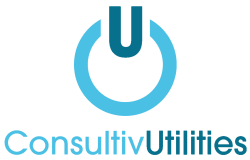Originally announced in the March 2020 Budget, the Green Gas Levy (GGL) came into effect in October 2021.
The GGL is designed to ultimately help support the UK’s target to achieve Net Zero greenhouse gas emissions by 2050.
How will the GGL help the UK achieve Net Zero?
The levy tax goes towards funding payments made for the injection of eligible biomethane into the gas grid through the Green Gas Support Scheme (GGSS). As this is a green gas which is produced from organic waste, it will help reduce greenhouse gas emissions.
How is the Green Gas Levy calculated?
The GGL is a quarterly levy running from 1 April to 31 March. It is calculated on the number of meter points that a licenced fossil fuel gas supplier serves.
The levy rate itself is calculated and published by the Energy Department on their website.
Who contributes to the Green Gas Levy?
The GGL is a tax which applies to all licenced fossil fuel gas suppliers in Great Britain. Only gas suppliers that supply 95%+ certified biomethane within a scheme year may be exempt from some levy requirements.
How do I know if I am exempt from paying GGL?
If a supplier believes that they will be supplying at least 95% green gas, they must supply Ofgem with the correct evidence to demonstrate this. Ofgem will then study the information to consider exemption. It’s important to note that if a supplier is provisionally exempt, they will be required to provide evidence of supplying at least 95% green gas within that scheme year, otherwise they will be required to backpay the levy.
Meter point submissions explained…
Each licenced fossil fuel gas supplier must submit their quarterly meter point data, declaring the number of Meter Point Reference Numbers (MPRNs) that they had for each day from the previous quarter, for each gas supply licence that they held during that period.
This information is then used by Ofgem to calculate both the Green Gas Levy obligation due for that period and the credit cover required for the upcoming quarter.
At this point, the supplier must lodge credit cover and/or a letter of credit to make sure funds can be issued on time.
What role does Ofgem play?
Ofgem act as the administrator of both GGL and GGSS on behalf of the Gas and Electricity Markets Authority. As administrators, Ofgem have various responsibilities, such as publishing dates for when submissions of meter point data are required by licenced suppliers, (on the annual scheme schedule), and validating/calculating such data.
If a supplier fails to submit their MPRNs by the date specified, Ofgem will calculate the data for that quarter without the licenced supplier’s input. They will potentially do this by obtaining information from third parties. The supplier is then placed onto the default register of non-compliant suppliers. This information must stay published for at least one year, even where payment is processed after they have been reported.
How can Consultiv Utilities help?
If you would like to discuss the GGL further, or if you have any questions, please get in touch. Our highly knowledgeable and experienced team are always happy to help.
Thank you for reading our blog. Share your thoughts on the Green Gas Levy or any other energy-related matters with us via email at info@consultivutilities.com.
For more guidance on GGL you can visit Ofgem, or for more information on rates and exemptions go to www.gov.uk.
Categories:

